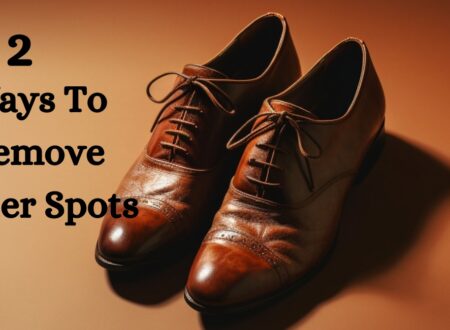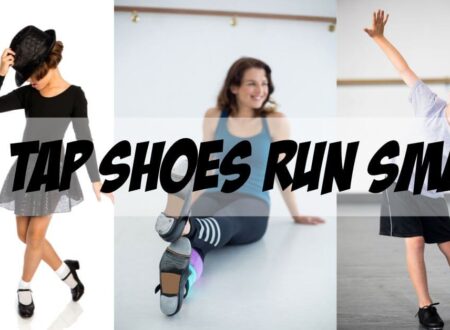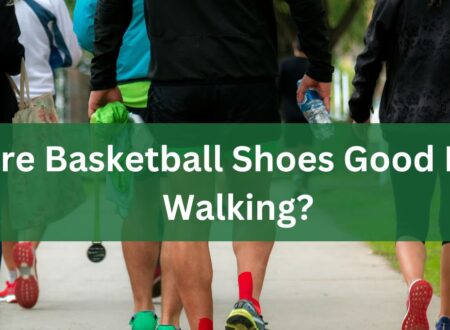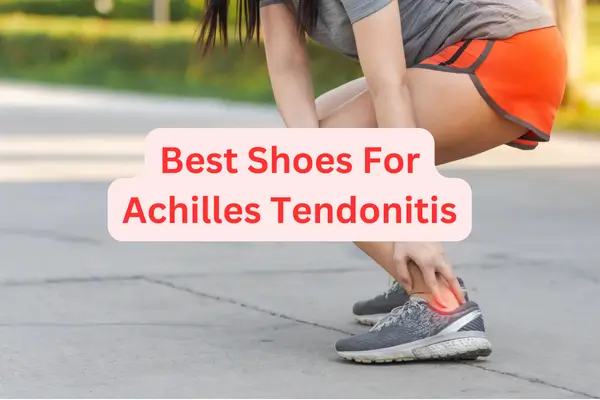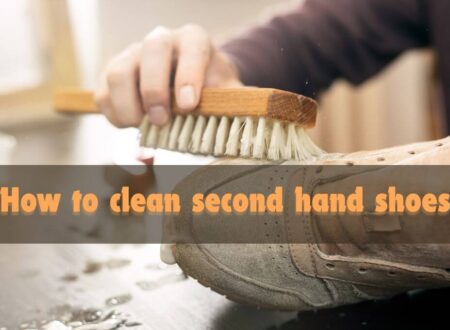If you are a runner you must have heard about Hoka Shoes. I am an avid fan of this shoe brand.
They were easy to spot on runners’ feet in the park, or on the race track.
Those big, puffy soles. The original incarnation of the exact same system dates back to 2009 and the US brand, Hoka. From the beginning, Hoka made running … well, easier.
The brand was originally named after Hoka One One, meaning ‘fly over the earth’ in Maori.
After most people shortened the name to Hoka, the company decided at the end of 2021 to drop the One and One One, keeping only the Hoka.
It was a new alternative that, at the time, barefoot running was all the rage and now is among the fastest-growing shoe brands of any time.
Nicolas Mermoud and Jean-Luc Diard, the founders of the Intermarché-Wanty-Gobert Matériaux cycling team, wanted shoes that would help runners go faster, particularly downhill.
And, with this vision, the shoes got built. Now, runners swear by them.
Today we’ll look at how Hoka Shoes went from a concept to a favourite among runners the world over. Put your running shoes on and let’s run with Hoka.
Distinctive Features of Hoka Shoes
- Thick, Curved Sole: The unique thick sole on Hoka shoes curves to drive your foot forward, making running feel more efficient.
- Cushioning Midsole: Lighter, more responsive, durable cushioning with better protection without compromising your performance.
- Bucket Seat Design Inspiration from racing car seats: Personal support directly around the foot, as in Hoka’s Bucket Seat design, increases stability and comfort.
- J-Frame™ Technology: Provides support and guides the foot through its natural gait without the use of rigid material that could compromise comfort.
- PROFLY™ Midsole: Combines soft foam in the heel for a smooth landing with firm foam in the forefoot for a quick toe-off, for a full-length, balanced, responsive ride.
- Meta-Rocker Geometry: Hoka shoes and other forms of minimal footwear create ground contact that resembles a low heel-to-toe slope and gently curved midsoles. These shape-integrated features act in unison with the biomechanics of the human foot to facilitate gait and encourage propulsion forward by reducing the energy expended.
- Diversity of Models: Hoka has something for everybody, from a breathable everyman like the Clifton to a super-cushioned workhorse like the Bondi to the ultra-light speedster, the Carbon X.
- Ready for the Rough: Trail-Ready Options (like the Speedgoat) for off-road experts will dominate in their ability to grip and stabilize on technical trails.
- Innovative Upper Construction: Almost every Hoka model has a low-weight mesh upper with a larger toe box to accommodate foot swelling during longer runs.
- Pronation Control: Some Hoka models incorporate the brand’s trademarked J-Frame™ technology for runners who require overpronation support. The technology maintains comfort without the need for traditional medical posts.

The Founding of Hoka One One
A Vision Against the Trend
In 2009, two friends, Nicolas Mercier and Jean-Luc Diard, started dreaming. All the running shoes everyone else wore were thin. But not theirs. They wanted shoes that would make them feel as if they were flying downhill.
From Idea to Reality
Inside those tiny cubicles, they started to construct a new kind of shoe – a soft, cushioned shoe that was at the same time light and responsive, so that runners wouldn’t feel weighed down. They had a lot of work to do.
Sharing with the World
They designed their first shoe and christened it Hoka One One.
It was the phrase for ‘fly over the earth’ in a remote language. Runners tried them on and liked them. And then they started telling their friends. Before long, everyone was asking to fly in Hoka’s shoes.
Unique Design and Technology of Hoka One One

The Original Vision
The first Hoka had an incredibly big outsole that was also very thick.
This was stable but, more importantly, it provided a lot of cushioning. Runners could go further because they were more comfortable.
The big sole was like the big tires of the mountain bike and helped with running on rough terrain.
Light but Strong
Although the soles were large, they were not heavy. Nicolas and Jean-Luc collaborated with a chemist with a unique formula to make the sole.
It was a light material that also provided extreme cushion.
It was 29 millimeters thick, which was tons compared to other running shoes of the era. But it didn’t make the shoe heavy in the slightest.
These shoes allow a runner to run fast and comfortably – but also because they are different from other running shoes.
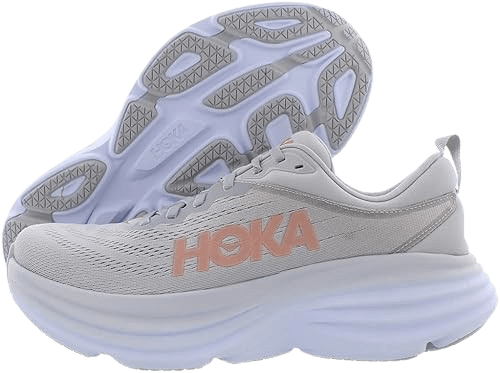
Hoka’s Journey to Widespread Popularity
Hoka One One was branded as something for people who loved to run, or more specifically, for trail runners who needed shoes to mush through long feet-pummelling races.
And those runners like to acquire the best gear for running better.
But over time, Hoka’s shoes spread to the masses, escaping the elites.
Not only the pros but non-competitive runners too, fun runners, and people who simply want cool, comfy shoes.
Their shoes were most popular for exercising and running, but people also wanted them for just walking around.
Steps to Becoming a Household Name
From 2013 to 2014, Hoka did something, making shoes available in many more stores. This was a large number of stores.
Before Hoka shoes were hard to find. But now, in a lot of stores where you can buy shoes, Hoka shoes are also found. This makes it seem easy to buy Hoka shoes, for it gets many people buying them.
More Than Just Running Shoes
So Hoka’s shoes were no longer just reserved for runners. They were shoes that anyone who needed a pair of comfortable shoes could buy into.
During the pandemic and beyond, people were at home more, and it felt good to have shoes that felt good on your feet. Hoka shoes are among the most comfortable on the market. And younger people liked the look of them, which was a big plus.
Now, Hoka was not merely an athletic shoe company but a modish one.
Working with Experts
Hoka also sponsored foot doctors. These doctors recommended Hoka to people with sore feet.
A lot of runners have foot pain (called Plantar Fasciitis). Hoka soles fixed this pain. This made more people believe in Hoka.
They also told their stories on Hoka’s website and other places.
Hoka Shoes Historical Timeline
| Year | Milestone |
| 2009 | Hoka One One was started by Nicolas Mermoud and Jean-Luc Diard, two former Salomon men, in Annecy, France. |
| 2013 | Hoka was purchased by Deckers Brands on 1 April 2013, which greatly increased its distribution channels and marketing power. |
| 2013-2014 | Hoka shoes soon became popular beyond ultramarathoners for their maximum cushion and minimal weight, noticed by a broader community of regular runners. |
| 2013-2014 | The brand then expanded its line of shoes to include lighter-weight shoes with an abundance of cushioning, lightweight training and racing shoes, and track spikes. |
| 2023 | The high cushion, combined with lean materials, is a unique combination in the market, and was recently credited by Men’s Health magazine as the Hoka running shoe, one of ‘the top-selling shoes in America’. |
| 2023 | The company achieved a revenue of US$1.41 billion, marking significant growth and success. |
| 2023-2024 | Hoka continued to sponsor professional runners and partnered with running groups and events, including Runna and The Mesa Marathon. |
Product Range Evolution of Hoka One One
Introduction of Lower Profile Shoes
In 2014, Hoka One One introduced a new range of lower-profile shoes.
This served to tap a broader sector of the customer market. The brand still includes the trademark marshmallow cushioning but in a lower stack height (‘oversize’ rather than the ‘ultra size’ models), and they are aerodynamically shaped for a snug fit.
Hoka One One’s Diverse Product Lineup
Hoka has products for Road Running, Trail Adventure, and All-terrain Usage.
Here are some top rated shoes series of Hoka:
| Shoe Type | Top Products | Features |
| Road Running | Clifton | A balance of cushion and lightness, ideal for long distances on pavements.Also considered Hoka walking shoes. |
| Trail Running | Speedgoat | Rugged and grippy for off-road trails, with ample support. |
| All-Terrain | Challenger ATR | Versatile for mixed terrain, providing stability and comfort. |
| Racing | Carbon X | Lightweight and propulsive, designed for speed and competition. |
| Hiking | Kaha | Provides durability and support for challenging hikes. Also consider Hoka trail running shoes. |
If you want more specialized shoes then…
HOKA Running Shoes for Women
- HOKA Clifton 9: Best for everyday training.
- HOKA Bondi 8: Best for cushioning.
- HOKA Mach 6: Best for distance.
- HOKA Rocket X 2: Best for road racing.
- HOKA Speedgoat 5: Best for trails.
- HOKA Arahi 7: Best for stability.
- HOKA Mach X: Best for speedwork.
HOKA Walking Shoes for Men
- HOKA Transport: Best for commuting, which can be suitable for walking due to its versatile design.
Hoka’s Marketing Genius
Teaming Up with the Pros
Concerning getting their name out there, Hoka nailed it when they signed contracts with top athletes, such as the Olympic medallist Leo Manzano.
Think of the brand image of Hoka when you see a champion sprinting towards winning a race wearing one of their shoes.
That’s the kind of imagery you expect your customers to process in their minds: ‘If it’s good enough for Leo, it’s good enough for me.’
Running with the Big Leagues
While only a handful of athletes can run a good time at a pro meet, Hoka didn’t just go after the athletes but the whole team ethos.
Signing elite training groups is the equivalent of a product endorsement on steroids.
Rather than one bro claiming Hoka is cool, it’s a troop of fast runners training hundreds of miles a week in those shoes.
Hoka isn’t just cool, it’s fast and serious about the sport.
Recent Sponsorship Highlights
- Hoka then sponsored the Foot Locker Cross Country Championships and later made NIL deals with three past champions – Natalie Cook, Kole Mathison, and Karrie Baloga.
- They continued to dominate the running market as event sponsors of the Life Time Miami Marathon – and in 2015, the Chicago Half Marathon.
- Hoka also expanded its presence by partnering with Lifetime Athletic Clubs to sponsor group classes and training programs.

Operational Excellence of Hoka Shoes
Deckers’ Master Stroke Keeping the Spirit Alive with the Original Founders
When Deckers Brands discovered Hoka back in 2013, it was like coming across a rough diamond. The company knew there was some incredible potential there, but it needed some real craftsmen to polish it off.
That’s why it was so smart for Deckers to leave Hoka’s founders in place: the company’s alchemy belonged in their heads.
Instead, they kept them close – which meant keeping the visionaries of Hoka in charge of the product. And ensured the very thing that made it weird would not just be maintained but grow.
In this new context, Hoka’s founders didn’t just try to keep doing what they were doing.
They had more freedom to expand on their vision since they could explore even more ambitious designs and ideas knowing they had the support of Deckers and its larger infrastructure.
A Culture of Bold Moves and Testing Grounds
Deckers isn’t shy about being different. They created a culture that doesn’t just tolerate the quirky they embrace it.
Deckers was always in the business of footwear with a personality.
Recall their other companies, such as UGG and Teva. They were never just shoes, in the way that Hoka now is.
From the get-go, Deckers brought a wave of creative-culture appetites to Hoka, a taste for the avant-garde, a search for the distinctly other.
But how on earth do you know that these brazen designs will pay off? You test them. Deckers’ scheme is smart.
They use their own stores as a proving ground for new Hoka models.
This way they aren’t relying on theory or speculation; they are watching what customers do when they see new designs.
This hands-on approach enables Deckers to make smart decisions about which shoes are ready for prime time, and which ones need a little more time in the lab.
The Fine Line of Production and Quality Control
But that savvy extends beyond Deckers’ designs and testing processes. It extends all the way to the factory itself.
By producing in China and Vietnam, they don’t carry excessive inventory, and they manage to create the finest Hoka shoes.
Deckers’ approach of establishing supervisory offices in production ensures constant oversight.
And the result?
A Hoka that feels as if it was conceived wittingly at every stage – from drawing board to last lace-hole: something from the inside out that a runner would swear by with the inside of their eye.
Hoka’s OmniChannel Strategy: A Seamless Customer Experience
Hoka One One (today owned by Deckers Brands) put in place an omnichannel position to give shoppers ease with their purchases.
In this regard, Hoka has aligned with the consumer shift by serving up a DTC online experience while at the same inviting select specialty retailers to the table.
In addition, omnichannel would offer a consistent, brand-focused experience across your sales platforms and more.
That is why its very visible portion of brand loyalty and inventory productivity, as it’s known in Deckers’ 2022 Annual Report, is so large. (Source)
Hoka’s Latest Lineup
- HOKA Speedgoat 6: Trail favorite with an updated dynamic upper. Release date: Spring 2024.
- HOKA Mach 6: Redesigned midsole for tempo days. Release date: March 2024.
- HOKA Arahi 7: Lightweight stability shoe with a new upper. Release date: January 15, 2024.
- HOKA Mach X 2: Second iteration of the plated Mach. Release date: September 2024.
- HOKA Cielo X3 LD: Designed for 3-10k distances, with a carbon fiber and pebax plate. Release date: Winter 2024.
- HOKA Skyward X: A super trainer with a skyscraper stack height. Release date: April 2024.
FAQs on HOKA Shoes
Where are HOKA shoes from?
HOKA originated in France, founded by Jean-Luc Diard and Nicolas Mermoud.
What distinguishes HOKA shoes from others?
HOKA shoes are known for their thick, cushioned soles and lightweight design.
Who manufactures HOKA shoes?
HOKA is a part of the Deckers Outdoor Corporation.
What does ‘HOKA One One’ mean?
HOKA One One, the new super-cushioned running shoe, has its name written in the Maori language and, literally, means ‘time to fly’.
Which HOKA shoe offers the best cushioning?
The HOKA Bondi 7 is known for its superior cushioning among road running shoes.
Are HOKA shoes suitable for running?
HOKA makes some of the best shoes for running because they have very good cushioning.
How long do HOKA shoes last?
HOKA shoes typically last between 400-800km, depending on various factors.
Let’s Have Strides with HOKA Shoes
So, what’s the takeaway?
If you value a shoe that allows your stride, optimizes your comfort, and launches your foot forward with every step, then HOKA might be the brand you’ve been seeking.
It’s not the shoe. It’s where it takes you. And for all those already converted I hope that the message is as simple: Put on a pair of HOKAs and ask your feet what they feel.
Now, the question is not just “Why HOKA?” but “Which HOKA?” and the answer lies in your next step.

, your friendly shoe expert and fitness fan.



